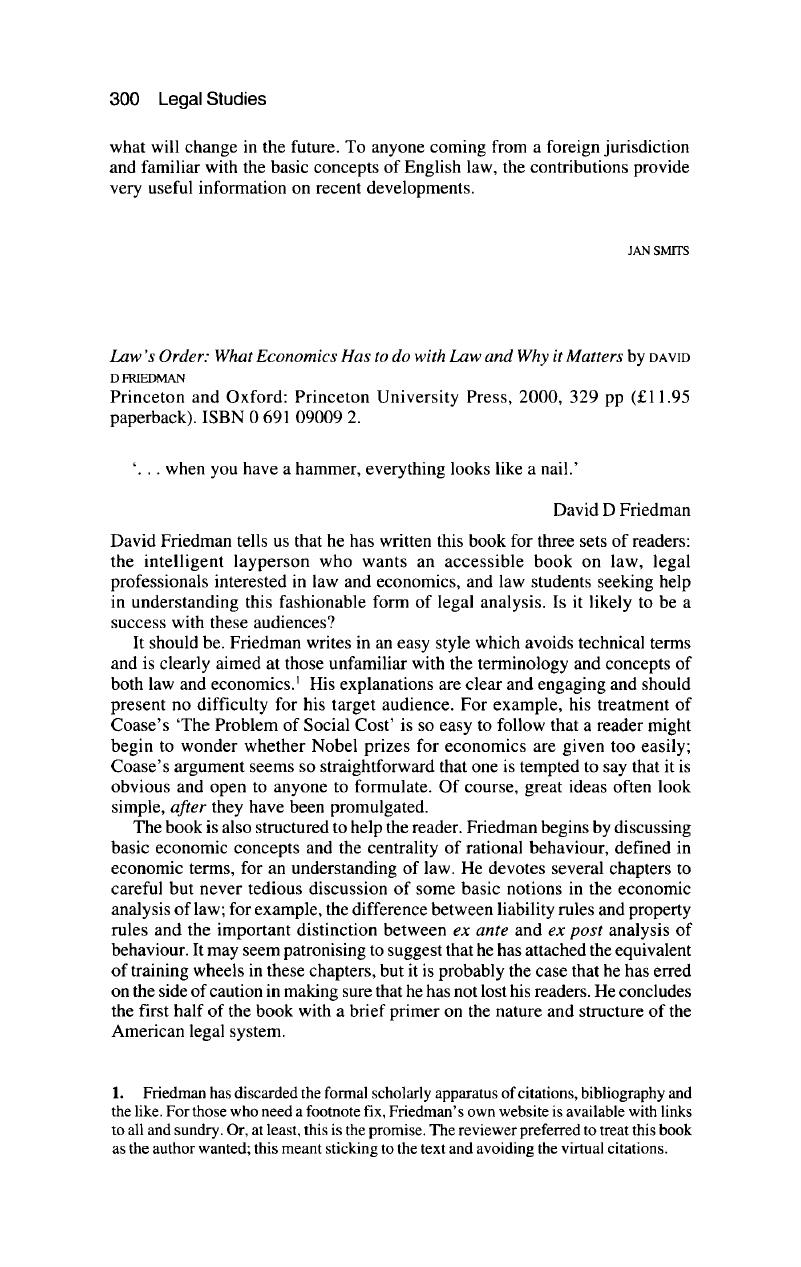No CrossRef data available.
Published online by Cambridge University Press: 02 January 2018

1. Friedman has discarded the formal scholarly apparatus of citations, bibliography and the like. For those who need a footnote fix, Friedman's own website is available with links to all and sundry. Or, at least, this is the promise. The reviewer preferred to treat this book as the author wanted; this meant sticking to the text and avoiding the virtual citations.
2. P 306.
3. See, for example, P Birks ‘Definition and Division: A Meditation on Institutes 3.13 (ed) The Classifcarion of Obligations (Oxford: Clarendon Press, 1997) p 1.
4. S Macaulay 'Non-Contractal Relations in Business'(1963) 28 Ameraican Socialogical Rev 45.
5. See eg L Bemstein ‘Opting out of the Legal System: Extralegal Contractual Relations in the Diamond Industry’ (1992) 21 J Legal Studies 1 15; D Campbell and D Harris ‘Flexibility in Long-term Contractual Relationships (1993) 20 J Law and Society 166; S Deakin et al ‘Trust or Law? Towards and Integrated Theory of Contractual Relations between Firms’ (1994) 21 J Law and Society 329; R Ferguson ‘The Adjudication of Commercial Disputes in Modem England’ (1980) 7 British J Law and Society 141; T Palay ‘Comparative Institutional Economics: The Governance of Rail Freight Transacting’ (1984) 13 J Legal Studies 265; G Rubin ‘The County Courts and the Tally Trade, 1846-1914’ in G Rubin and Sugarman, D (eds) Law, Economy and Society: Essays in the History of English Law 1750-1920 (London: Professional Books, 1984) p 321 Google Scholar.
6. Oxford: Oxford University Press, 1999.